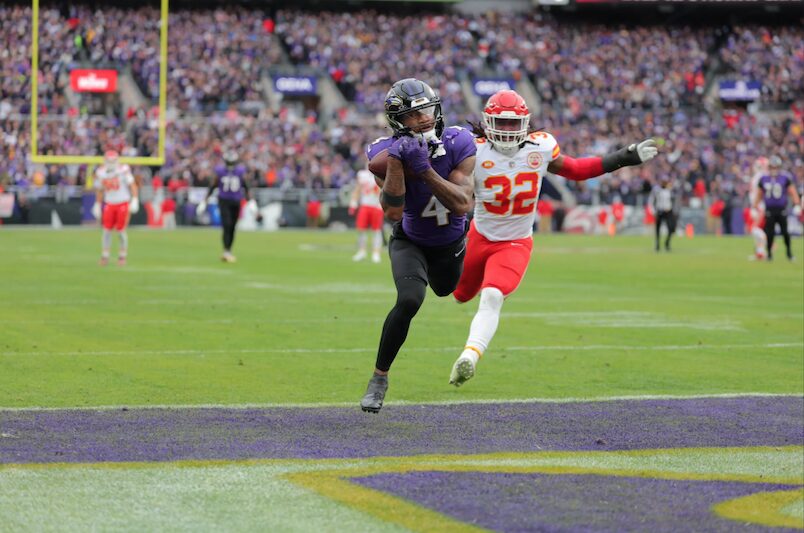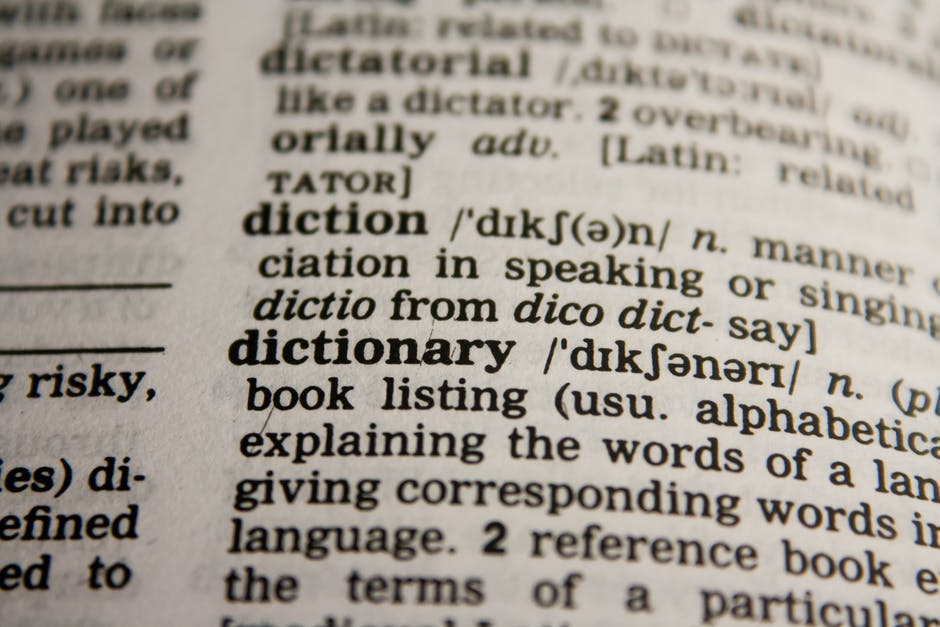EPA football statistics have transformed the way analysts, coaches, and bettors understand game performance beyond basic metrics. Expected Points Added (EPA) stands as a widely used advanced statistic in football that ranges from -3 to 7. Higher values show that a team has better scoring chances. Many fans might not grasp what EPA means in football, yet it remains crucial to anyone who wants to understand team performance or place informed bets.
EPA’s meaning in football boils down to calculating what an average team will achieve in specific situations. The math works simply: EPA = (Expected Points After Play) – (Expected Points Before Play). This calculation shows if a play helped or hurt a team’s scoring chances. League average EPA per play equals 0.0 by definition, which helps put performance in perspective. Top offenses usually maintain between +0.10 to +0.20 EPA per play.
Smart bettors see these numbers as valuable insights. The top-10 teams in offensive EPA per play feature powerhouses like the Kansas City Chiefs and Buffalo Bills. Historical data proves that offensive EPA per play predicts outcomes better than defensive EPA. This makes it valuable when you have betting decisions to make. This piece explains everything about EPA football stats and ways to make use of information for better betting strategies.
What is EPA in Football and Why It Matters
Expected Points Added ranks among the best tools we have in modern football analysis, yet many fans aren’t sure how to use it. EPA football brings a fresh way to measure success on the field that goes beyond simple stats that don’t tell the whole story.
Understanding the EPA football meaning
EPA measures how much value each play adds by showing how it changes a team’s chances of scoring. Simple stats treat every play the same way, but EPA looks at each situation differently. The system uses a scale that runs from about -3 to +7 points. These numbers show which team will likely score next and how many points they’ll get.
The system assigns values to field position, down, and distance based on data from thousands of NFL plays. To name just one example, a team with first-and-10 at midfield might have an expected points value of 2.1. A team with third-and-5 from their own 5-yard line might sit at -2.1 (that indicates the defense will likely score next).
The math is simple: take the expected points before a play and subtract them from the points after it. A positive EPA shows the play helped the team score, while negative EPA means the opposite.
What does EPA mean in football vs traditional stats
Traditional football stats don’t deal very well with many things that EPA handles easily. Here are some key differences:
- Context awareness – A 5-yard gain means more on 3rd-and-4 than it does on 3rd-and-10. Regular stats see these as similar plays, but EPA knows the substantial difference.
- Field position value – Yards don’t all mean the same thing. A touchdown from the 1-yard line gets fewer EPA points than a 60-yard pass to the 1-yard line, even though the first one actually scores.
- Turnover nuance – A turnover at midfield that goes back to your 20-yard line costs -5.5 EPA. A Hail Mary pick at halftime doesn’t hurt nearly as much.
EPA works like “yards with context”. It paints a detailed picture compared to regular box scores where yards, touchdowns, and turnovers count the same in any situation.
EPA reshapes our view by showing that impressive-looking stats (like a quarterback throwing for 300 yards) might not mean much if they came while trailing by 20 points.
Why smart bettors care about EPA
Smart bettors know EPA gives them insights into team performance that box scores miss. It helps find undervalued teams and players by separating empty stats from meaningful plays.
Bettors use EPA because it relates better to actual scoring and game outcomes than old-school metrics—it directly shows points scored and allowed. This makes it great to review offenses, defenses, and quarterbacks.
EPA also opens up new betting angles. Bettors can spot teams doing better than their dropback EPA suggests and maybe bet against quarterback props. Some bettors use EPA for live betting and jump in when they see a play that means more than the current odds show.
Smart bettors know EPA’s limits too. It doesn’t factor in opponent quality, which can throw things off when a team’s schedule isn’t balanced. EPA also has trouble rating individual players because football is complex and it’s hard to say who deserves credit for each play.
All the same, anyone looking for an edge in football betting needs EPA because it measures what decides games—points. ESPN said it best: “If you want something that, at the end of the game, is as good as the score at saying who wins but that also changes with every play in the game, use EPA”.
How EPA is Calculated: The Basics You Need to Know
The calculation of EPA in football builds on a simple math concept that packs powerful analytical punch. This process turns basic play-by-play stats into applicable information that smart bettors can use to gain an edge.
Expected points before and after a play
Expected points (EP) are the foundations of EPA calculations. They show the average points a team might score in any given situation. The values usually range from -3 to +7 points. EP answers a basic question: “Who’s likely to score next and how many points?”
NFL analysts learn about EP by studying historical data across multiple seasons. The concept came from Bengals quarterback Vincent Carter and Northwestern University professor Robert Machol back in 1970. They noticed teams had better chances of scoring as they got closer to their opponent’s end zone.
EP values change based on field position. Teams with the ball at their own 1-yard line have about -1.28 expected points, which suggests the defense will likely score next. The numbers climb steadily as teams move forward. Red zone plays show much higher values – plays from 10-19 yards out average 4.05 EP, while plays inside the 10-yard line reach 5.17 EP.
Key variables: down, distance, field position
EP calculations depend on several crucial factors:
- Down and distance: First downs give higher EP values than later downs everywhere except near a team’s own goal line where safety risks exist. A 1st-and-10 matches a 2nd-and-2 in EP value. Teams need about 8 yards per play to “stay on schedule”.
- Field position: EP values rise as teams get closer to scoring. A 1st-and-10 at your 20-yard line gives roughly +0.4 EP. The same situation at the opponent’s 20-yard line jumps to about +4.0 EP.
Today’s models also factor in:
- Time left in half
- Home-field advantage
- Indoor/outdoor stadium environment
- Score differential
- Timeouts remaining
EPA = EP After – EP Before
The EPA formula keeps things simple: EPA = (Expected Points After Play) – (Expected Points Before Play). This calculation shows if a play helped or hurt the team’s scoring chances.
Here’s a real example: Your team starts with 1st-and-10 at their 20-yard line (EP = +1.2). They complete a 15-yard pass to reach the 35-yard line, creating a new EP of +1.8. The EPA for this play equals +0.6 points.
Offensive EPA ranges from -14 to +10. The worst play would be throwing a pick-six from your 1-yard line (EP drops from +6.9 to -7). The best would be scoring a 99-yard touchdown (EP jumps from -3 to +7).
Analysts apply this formula to every play and judge success by EP changes instead of just yards gained. First downs boost EP, while losses or incomplete passes usually lower it.
This method explains why EPA has become crucial for smart football betting – it measures each play’s true effect beyond basic stats.
Using EPA to Evaluate Teams and Offenses
Smart bettors need to learn about EPA metrics and their application to evaluate team performance. These EPA variations give us insights that regular stats can’t match.
EPA per play, per pass, and per run
EPA per play shows us a complete picture of how well an offense performs by calculating the team’s total EPA average. The league average sits at 0.0, where positive numbers show better-than-average play and negative numbers indicate worse performance. The best NFL offenses usually manage to keep their EPA between +0.10 to +0.20 per play.
A deeper look at EPA per pass and EPA per run shows some interesting patterns. The average EPA per pass (+0.04) is a big deal as it means that it’s much higher than EPA per run (-0.06). This explains why teams that pass more often seem to perform better. Data from 12 seasons proves this point – all but one of these NFL teams had negative rushing EPA, with even the Baltimore Ravens averaging only -0.03 EPA per rush play.
Success rate and big play rate
Success rate tells us how consistent a team is by showing what percentage of plays have positive EPA. Teams with better success rates show they can perform well more often. Big play rate measures explosiveness by tracking plays with EPA above 0.90, which represents the top 20% of all offensive plays.
Success rate and big play rate usually go hand in hand. Teams with low success rates but high big play rates tend to rely on occasional big gains rather than steady progress. This helps bettors spot offenses that might have trouble against well-organized defenses.
Bad play rate and what it reveals
Bad play rate tracks plays with EPA below -0.75 (bottom 20%). We use this to find offenses that make serious mistakes – mostly turnovers and sacks, plus failed third or fourth down conversions. Teams with over 20% bad play rate struggle to stay consistent, no matter their overall EPA.
NFL EPA tiers and team comparisons
Scatter charts help us visualize NFL teams in EPA tiers by plotting offensive EPA (x-axis) against defensive EPA (y-axis, inverted). This creates four groups:
- Upper right: Elite teams (strong offense and defense)
- Upper left: Defense-dominant teams
- Lower right: Offense-dominant teams
- Lower left: Struggling teams
Offensive EPA predicts future performance better than defensive EPA. Analysts multiply offensive EPA by 1.6 when compared to defensive EPA. This explains the 2023 Jaguars’ improvement despite their average traditional stats.
How EPA Helps You Make Smarter Bets
Smart football bettors know that finding an edge means spotting value before the market does. EPA football stats give this advantage by measuring performance in ways traditional metrics miss.
Spotting undervalued teams early
EPA helps identify teams that play better than their record shows. Smart bettors act quickly when a team’s EPA metrics exceed their win-loss record, before the betting market catches up. The Chiefs, Bills, Eagles, and Jacksonville Jaguars ranked among the top-10 in offensive EPA per play through Week 10 of the 2022 season. Bettors who spotted this pattern early gained a valuable edge.
These stats help you spot teams with inflated or deflated point spreads. The Kansas City Chiefs proved this point in 2021. They allowed high EPA per rush attempt and dropback in their first eight games, which led to a poor 2-6 ATS record.
Using EPA trends to predict outcomes
EPA changes throughout a season reveal emerging strengths and weaknesses. Bettors can use EPA creatively – they might fade quarterbacks in player props when teams exceed their dropback EPA or find live betting opportunities by understanding a play’s real effect.
The opposite approach works just as well. Teams that perform below their EPA metrics often provide value because the betting market tends to overreact to recent losses. The 2022 Baltimore Ravens showed this clearly. Their defense ranked 14th in EPA per play allowed but improved after getting linebacker Roquan Smith.
Case study: Jaguars 2022 turnaround
The 2022 Jacksonville Jaguars showcase EPA’s predictive power perfectly. EPA stats showed the Jaguars had the division’s best offense long before their late-season surge. The team went 6-2 after Week 10, while the rest of the AFC South struggled with a 3-21 record.
This improvement wasn’t random. Their offense jumped from 27th place in total yards (305 per game) to 9th (357 per game). Their scoring also improved dramatically, moving from last place (14.9 points) to 10th (23.8 points).
Combining EPA with other betting models
EPA works best alongside other metrics. Since EPA doesn’t factor in opponent quality, you need strength-of-schedule adjustments to put it in context. Smart bettors often combine EPA with metrics like DVOA (Defense-adjusted Value Over Average), which compares performance to average teams in similar situations.
Offensive EPA provides more reliable predictions than defensive EPA. Analysis shows that weighting offensive EPA at 1.6 and defensive EPA at 1.0 gives the best predictive power for future net EPA.
EPA vs Other Metrics: What to Trust and When
Smart bettors know that looking at multiple metrics gives a better picture of football performance than just relying on EPA. They balance different analytical tools based on the situation.
EPA vs DVOA: key differences
DVOA (Defense-adjusted Value Over Average) and EPA work together with different approaches. DVOA looks at each play’s team success compared to league averages and adjusts for situation and opponent quality. EPA measures raw point effect without looking at opponent strength.
Both metrics use the same variables (down, distance, field position). DVOA’s advantage comes from its opponent adjustments that EPA doesn’t have. This makes DVOA really useful to evaluate teams that play very different schedules. EPA shows better correlation with actual scoring and game outcomes because it directly connects to points.
CPOE football and how it complements EPA
CPOE (Completion Percentage Over Expected) shows how a quarterback’s completion percentage stacks up against expected performance based on throw difficulty. The metric looks at things like throw depth, target location, and how close defenders are.
CPOE proves valuable among other stats because it stays consistent year after year—showing a 0.226 RSQ correlation between seasons. This reveals a quarterback’s true skill separate from their situation. That’s why it works so well with EPA for player evaluation.
When EPA might mislead you
EPA works best as a descriptive metric rather than a predictive one. It doesn’t deal very well with garbage time—those moments when the game’s basically over. EPA also can’t separate individual player contributions well.
There’s another reason to be careful – EPA depends heavily on context. Teams playing weaker opponents might look better than they really are since EPA doesn’t adjust for opponent strength. The best betting insights come from combining EPA with success rate, DVOA, and CPOE to get the full picture of performance.
EPA football statistics mark a major step forward for anyone who wants to understand team performance and make smarter bets. Traditional box scores treat all plays the same way. EPA takes a different approach by capturing each play’s contextual value. This gives bettors a clearer picture of which teams really affect scoring chances. Bettors who know how to use EPA have a big advantage over those who stick to basic stats.
Offensive EPA stands out as the most valuable metric since data shows it predicts outcomes better than defensive EPA. Teams that excel in offensive EPA per play tend to win consistently. The Kansas City Chiefs and Buffalo Bills rank among the top teams in this category. Smart bettors have noticed this pattern and they now weigh offensive EPA about 1.6 times more than defensive EPA to predict future games.
All the same, EPA works best when combined with other analytical tools. Success rate helps spot reliable offenses, while big play rate shows which teams depend on explosive plays instead of steady efficiency. DVOA metrics also help fix EPA’s weakness in measuring opponent quality. These tools are the foundations of a complete betting strategy.
The 2022 Jacksonville Jaguars proved how EPA can spot undervalued teams before regular stats catch up. Bettors who spotted their strong offensive EPA metrics made good money as the team went from last place to winning their division.
EPA football statistics measure what really counts in games – points. EPA has its limits, especially when you have to separate individual performances and adjust for opponent strength. Yet it remains a crucial tool for bettors looking for an analytical edge. Bettors who become skilled at reading EPA while knowing its limitations set themselves up to win more often in today’s sophisticated betting market.
Here are some FAQs about EPA football:
What does EPA stand for in sports?
In sports analytics, EPA stands for Expected Points Added. It is a statistical metric used primarily in football to measure the impact of a single play on the expected score of the game.
What does EPA mean?
EPA means Expected Points Added, which quantifies how many points a play is worth based on the change in the offense’s likelihood of scoring. A positive EPA indicates a successful play that improved the team’s scoring chances, while a negative EPA means the play hurt their chances.
What are the benefits of playing EPA football?
The term “EPA football” typically refers to the statistical concept, not a specific league or style of play. The benefit of understanding EPA in football is that it provides a more accurate measure of a player’s or team’s performance than traditional statistics like yards gained.
How does EPA work?
EPA works by assigning an expected points value to every game situation based on down, distance, field position, and time remaining. When a play occurs, the difference between the expected points before and after the play equals the EPA for that play.
What is EPA quarterback rating?
EPA quarterback rating is a metric that evaluates quarterback performance using Expected Points Added per play. This provides a more comprehensive assessment than traditional passer rating by accounting for all quarterback contributions including sacks, scrambles, and penalties.
What is EPA short for?
EPA is short for Expected Points Added in the context of sports analytics. In other contexts, EPA stands for Environmental Protection Agency, but in football discussion it exclusively refers to the advanced statistical metric.
What does EPA mean in football reddit?
On football Reddit communities, EPA means Expected Points Added, and it’s frequently used in analytical discussions about player and team performance. Users often cite EPA metrics to support arguments about which plays, players, or strategies are most effective.
What is the history of EPA football?
EPA in football was developed in the early 2000s as part of the advanced analytics movement in sports. It evolved from earlier concepts like Expected Points and has become a foundational metric for modern football analysis used by teams, media, and fans.
What is Russell Wilson’s EPA per play?
Russell Wilson’s EPA per play varies by season, but during his peak years with Seattle he consistently ranked among league leaders with positive EPA values. His ability to create big plays while avoiding negative outcomes typically resulted in strong EPA per play metrics.
What is a good EPA?
A good EPA depends on context, but generally positive EPA values indicate successful plays. For quarterbacks, an EPA per play around 0.20 or higher is considered excellent, while negative values typically indicate below-average performance.
How do you calculate EPA?
You calculate EPA by taking the difference between the expected points value at the start of a play and the expected points value at the end of the play. This requires access to historical NFL data and expected points models that assign values to specific game situations.










